THE
SAGA
OF THE
VOLSUNGS
THE NORSE EPIC OF SIGURD THE DRAGON SLAYER
Also by Jesse L. Byock
Feud in the Icelandic Saga
Medieval Iceland: Society, Sagas, and Power

University of California Press, one of the most distinguished university presses in the United States, enriches lives around the world by advancing scholarship in the humanities, social sciences, and natural sciences. Its activities are supported by the UC Press Foundation and by philanthropic contributions from individuals and institutions. For more information, visit www.ucpress.edu .
University of California Press
Berkeley and Los Angeles, California
University of California Press, Ltd.
London, England
Copyright 1990 by The Regents of the University of California
Library of Congress Cataloging-in-Publication Data
Vlsunga saga. English.
The Saga of the Volsungs: the Norse Epic of Sigurd the Dragon Slayer / introduction and translation by Jesse L. Byock.
p. cm.
ISBN 978-0-520-23285-3 (pbk.: alk. paper)
I. Byock, Jesse L. II. Title.
PT7287.V7E5 1990
839.63dc20
89-20313
CIP
Printed in the United States of America
13 12 11 10 09 08 07 06
12 11 10 9 8 7 6 5
The paper used in this publication is both acid-free and totally chlorine-free (TCF). It meets the minimum requirements of ANSI/NISO Z39.48-1992 (R 1997) (Permanence of Paper). 
To my daughter Ashley
and the fun we had telling the Sigurd
story on a trout fishing trip

CONTENTS
Chapter titles with an asterisk have been supplied by the translator; all other titles are in the original manuscript.
MAPS

INTRODUCTION
The unknown Icelandic author who wrote The Saga of the Volsungs in the thirteenth century based his prose epic on stories found in far older Norse poetry. His sources, which may have included a lost earlier prose saga, were rich in traditional lore. The Saga of the Volsungs recounts runic knowledge, princely jealousies, betrayals, unrequited love, the vengeance of a barbarian queen, greedy schemes of Attila the Hun, and the mythic deeds of the dragon slayer, Sigurd the Volsung. It describes events from the ancient wars among the kings of the Burgundians, Huns, and Goths, treating some of the same legends as the Middle High German epic poem, the Nibelungenlied. In both accounts, though in different ways, Sigurd (Siegfried in the German tradition) acquires the Rhinegold and then becomes tragically entangled in a love triangle involving a supernatural woman. In the Norse tradition she is a valkyrie, one of Odins warrior-maidens.
In Scandinavia, during the centuries after the Middle Ages, knowledge of the Sigurd story never died out among the rural population. Full of supernatural elements, including the schemes of one-eyed Odin, a ring of power, and the sword that was reforged, the tale was kept alive in oral tradition. In the nineteenth century, as the Volsung story was discovered by the growing urban readership, it became widely known throughout Europe. Translated into many languages, it became a primary source for writers of fantasy, and for those interested in oral legends of historical events and the mythic past of northern Europe. The saga deeply influenced William Morris in the nineteenth century and J. R. R. Tolkien in the twentieth. Richard Wagner, in particular, drew heavily upon the Norse Volsung material in composing the Ring cycle. In 1851 he wrote to a friend concerning the saga:
Already in Dresden I had all imaginable trouble buying a book that no longer was to be found in any of the book shops. At last I found it in the Royal Library. It is called the Vlsunga sagatranslated from Old Norse by H. von der Hagen [1815]. This book I now need for repeated perusal. I want to have the saga again; not in order to imitate it, rather, to recall once again exactly every element that I already previously had conceived from its particular features. [Wagners use of the Volsung material is discussed later in this Introduction.]
One can only speculate about the origin of the sagas dragon slaying and of other mythic events described in the tale. Many of the sagas historical episodes, however, may be traced to actual events that took place in the fourth and fifth centuries A.D., the period of great folk migrations in Europe. In this time of upheaval, the northern frontier defenses of the Roman Empire collapsed under the pressure of barbarian peoples, as Germanic tribes from northern and central Europe and Hunnish horsemen from Asia invaded what is now France and Germany. A seemingly endless series of skirmishes and wars were fought as tribes attempted to subjugate their enemies and to consolidate newly won territories into kingdoms and empires.
The memory of the migrations became part of the oral heritage of the tribesmen, as epic poems about heroes and their feats spread throughout the continent during succeeding centuries. In the far north legends and songs about Burgundians, Huns, and Goths, as well as new or revised stories about indigenous northern families such as the Volsungs, became an integral part of the cultural lore of Scandinavian societies. The old tales had not died out by the Viking Age (ca. 8001070), that is, several centuries after the migration period had ended. On the contrary, during this new age of movement in Scandinavia the epic cycles of the earlier migration period seem to have gained in popularity. As Norsemen sailed out from Viking Scandinavia in search of plunder, trade, and land, they carried with them tales of Sigurd and the Volsungs.
One of the places to which the Norsemen carried these epic lays was Iceland, an island discovered by Viking seamen in the ninth century, which soon after its settlement (ca. 870930) became the major Norse outpost in the North Atlantic. In Iceland, as in the Norse homelands and other overseas settlements, the traditions about Sigurd and the various tribesmenamong them Huns, Goths, and Burgundiansbecame choice subjects for native poets.
The Saga of the Volsungs was written down sometime between 1200 and 1270. Its prose story is based to a large degree on traditional Norse verse called Eddic poetry, a form of mythic or heroic lay which developed before the year 1000 in the common oral folk culture of Old Scandinavia. Eighteen of the Eddic poems in the thirteenth-century Codex Regius, the most important manuscript of the Poetic (or Elder) Edda, treat aspects of the Volsung legend. (The specific extant poems on which the saga author relied are listed at the end of the book.) This manuscript, which is the only source for many of the Eddic poems, is, however, incomplete. An eight-page lacuna occurs in the middle of the Sigurd cycle, and the stories contained in The Saga of the Volsungs, , are the principal source of information on the narrative contents of these lost pages.

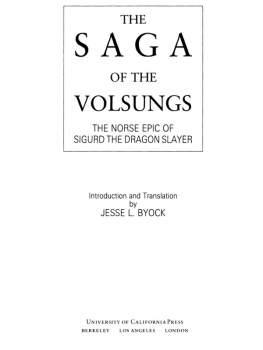

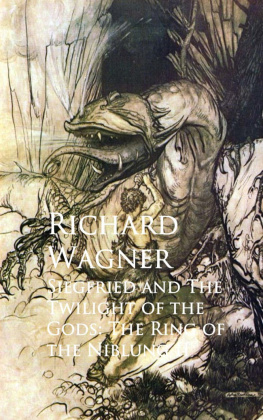
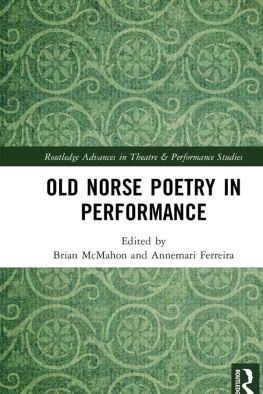

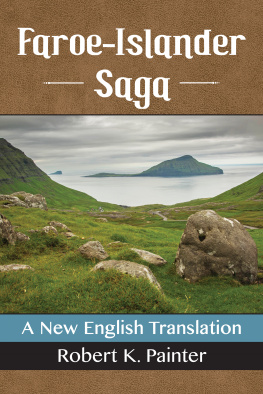
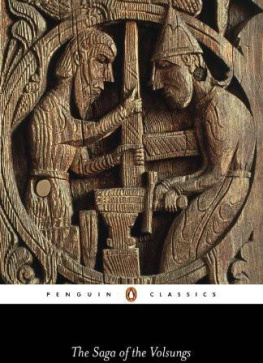



 CONTENTS
CONTENTS INTRODUCTION
INTRODUCTION